Text
Opposum Shrimp
I. Animalia
II. Bilateria
III. Protostomia
IV. Ecdysozoa
V. Arthropoda
VI. Crustacea
VII. Malacostraca
VIII. Eumalacostraca
IX. Peracarida
X. Mysida
XI. Mysis
XII. relicta
(Taken from: Integrated Taxonomic Information System, 2005)
The Opossum Shrimp (Mysida)
Their common name opossum shrimp comes from the presence of brood pouch in females, where they carry their larvae which are not free-swimming. This crustacean is like the kangaroo of the sea!
That’s a Mysid!
The cosmopolitans
They can be found in many types of aquatic environment, in freshwater and marine, deep sea, shallow coastal waters, lakes, rivers and underground waters. Mysids are utilized commercially in Japan, Southeast Asia, China and Korea, and can be found in different marine habitats such as Pelagic, Coastal and estuarine. Worldwide, there are 160 genera and over 1000 described species. (Porter 2016; Jones 2003)

Map of stations in Southeast Asia where Mysid specimens were recorded (Sawamoto 2013)
Life Cycle
Mysid Shrimp have mechanisms that help them in mating. In some species, receptive females release pheromones in the water to attract males. Mating takes place during copulation at night, where males deposit their sperm inside the brood pouch of a female. After mating, eggs are also deposited in the brood pouch and are fertilized. Depending on the species and water temperature, females brood the eggs that take weeks to several months to hatch. Young mysids are not released until they turn into well-developed juveniles.. Mysis relicta, one of the most studied mysid shrimp found in freshwater lakes, have a 1 to 2 year life cycle depending on the productivity of the lake. Eggs of Mysis hatch into fully developed young after 3-4 months. Typical lengths are observed in each stage or instar: I – 4.5 mm, II – 9 mm, III – 12 mm, IV – 16 mm. At stage IV, individuals reach sexual maturity. Some females have a fifth instar or stage, but males do not have. Fifth instar females have 22 mm total length. (Rudstam 2009)
Anatomy
Mysids are generally small and transparent crustaceans, ranging from about 6 to 350 mm in length, where the length of the majority of species is less than 25 mm. They have a pair of stalked eyes and two pairs of antennae on their head fused with up to four of the thoracic segments, and covered with a well-developed carapace. One of their distinct characteristics is the number of their thoracic appendages, where they have six to eight. Their pereopods are biramous or separated into two branches. Also, they have a distinctive pair of statocyst located in their tail fan or uropods. Statocyst is a sac-like organ that helps them maintain their balance and provide a sense on how they can orient themselves in their environment. Their common name Opossum Shrimp comes from their distinct characteristic or feature, having a marsupium or brood pouch. This is where the Mysids keep their eggs until they hatch and are released after reaching an early juvenile stage of development. The marsupium is a chamber formed by lamellae or oostegites on all or some of the second to eighth pairs of thoracic legs. (Lenihan 2017)
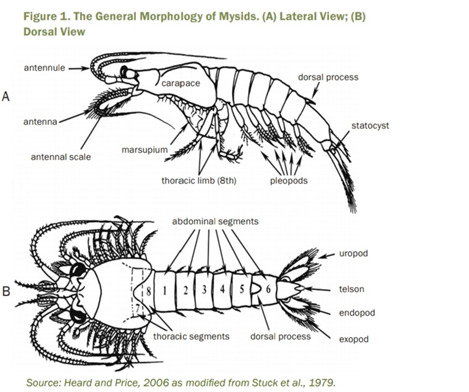
Photo from “Mysid (Americamysis bahia) Survival, Growth, and Fecundity Toxicity Tests” (EPA 2009)
Ecology
Mysids are present in almost all types of aquatic environment and are filter feeders and generally classified as omnivores, feeding on algae, detritus and zooplankton. They are very important in maintaining the balance of the aquatic ecosystem. Many fish and several species rely primarily on Mysids as their food. Mysids are rich in essential fatty acids that help in the survival of fishes. In cold regions, Mysids are a source of Polyunsaturated fatty acids that are important for fishes to have over-winter survival. Their abundance can form large shoals making them an important diet of several fish. Species like the Mysis relicta were introduced in the Kootenay lake in Canada, and it increased the growth rate and population of kokanee salmon. (Rudstam, 2009)
Sensitivity with a purpose
Mysids are very sensitive to a wide variety of contaminants. They are good indicators of harmful substances in the water. They are used as test organisms in monitoring the water quality. They are great help in wastewater management and ensuring a good quality of water in the estuarine and coastal areas since this is used in several water quality tests like the Mysid (Americamysis bahia) Survival, Growth, and Fecundity Toxicity Tests. This test is used by the U.S. Environmental Protection Agency to evaluate effluents in terms of its toxicity to biota and their impact on the natural environment. (Anderson et al. 2016; EPA 2009)
Relationship with humans
Mysids are very important especially in the aquaculture industry. They are used as food for different species of fish and a good source of nutrients for fishes being cultured like trout in the lakes of North America and Europe. Some species of Mysid are utilized as ingredients for fermented fish products. Shousuru is a Japanese fish sauce produced from fish meat added to 10% mysid, where the shrimp and mysid are used to color the sauce. (Ohshima et al. 2014)
Fun Facts
Little Cannibals
Mysids have cannibalistic behavior, where some eat weaker individuals. In fact, some parents may eat some of their babies!
Bloody Hell!
Hemimysis anomala or bloody-red shrimp is a species of Mysid Shrimp that can form reddish swarms in the shadows of piers and boats. They can spread and multiply rapidly and are considered “high-risks” for invasion of inland lakes in the US.
Invasion! Tragic Honeymoon
After mating, male Mysid (Mysis relicta) dies and the female lives for several months. A little sacrifice for the next generation.
References:
NOAA. n.d. Great Lakes New Invader: Bloody Red Shrimp (Hemimysis anomala). GLANSIS. Rretrieved from: https://www.glerl.noaa.gov/res/Programs/glansis/hemi_brochure.html#:~:text=Mysids%20are%20often%20called%20opossum,larger%20shrimps%20and%20other%20decapods.
Sawamoto, Shozo. 2013. Current Status of Mysid Taxonomy in Southeast Asia. Researchgate.net. Available from: https://www.researchgate.net/publication/307791935_CURRENT_STATUS_OF_MYSID_TAXONOMYIN_SOUTHEAST_ASIA
Rudstam, L.G. 2009. Other Zooplankton. Encyclopedia of Inland Waters. Science Direct. Available from: https://www.sciencedirect.com/topics/agricultural-and-biological-sciences/mysis
Anderson B., Philips B. 2016. Saltwater Toxicity Test. Science Direct. Available from: https://www.sciencedirect.com/topics/biochemistry-genetics-and-molecular-biology/mysida
Jones, D.A. 2003. Characteristics of Crustacea. Science Direct. Available from: https://www.sciencedirect.com/topics/biochemistry-genetics-and-molecular-biology/mysida
Porter, M.L. 2016. Collecting and Processing Mysids, Stygiomysids, and Lophogastrids. Journal of Crustacean Biology. Available at: https://academic.oup.com/jcb/article/36/4/592/2735746
Ohshima T, Giri A. 2014. FERMENTED FOODS-Traditional Fish Fermentation Technology and Recent Developments. Science Direct. https://www.sciencedirect.com/topics/agricultural-and-biological-sciences/neomysis
Lenihan, Jamie. 2017. Opossum Shrimp. Vic High Marine. Available at: https://www.vichighmarine.ca/opossumshrimp/
EPA. 2009. Mysid (Americamysis bahia) Survival, Growth, and Fecundity Toxicity Tests. U.S. Environmental Protection Agency. Office of Wastewater Management. 1200 Pennsylvania Ave., NW Washington DC
Zooplankton of the Great Lakes. Central Michigan University. Available at: http://people.cst.cmich.edu/mcnau1as/zooplankton%20web/mysis/mysis.html
Order Mysidacea. Key to Australian Freshwater and Terrestrial Invertebrates. https://keys.lucidcentral.org/keys/v3/TFI/start%20key/key/crustacea%20key/Media/HTML/Mysidacea.html
10 notes
·
View notes
Text
Shipworm
I. Classification
Animalia
Bilateria
Protosomia
Lophozoa
Mollusca
Bivalvia
Heterodonta
Myoida
Teredinidae
Teredo
Teredo navalis
Source: Integrated Taxonomic Information System, Teredo navalis (Linaeus, 1758)
II. Biology
Where WOOD we find them? The shipworm or the Teredo navalis can tolerate low salinity levels but usually flourish in marine environments, for both temperate and tropical regions.
Basically known in all the oceans of the world, except for the Antarctic, most probably because this species can only tolerate temperatures ranging from 15 to 25 degrees Celsius (Didziulis, 2007). Shiver me timbers am I right?
These animals are usually found living in submerged wood like in piers, ships or driftwood.
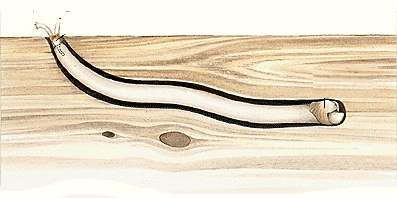
Image retrieved from https://www.waterwereld.nu/shipworm.php
More often than not, shipworms deal a significant amount of damage to submerged wooden structures as they bore themselves into the wood, creating a series of holes that make the structure less stable.

Image retrieved from https://kids.wng.org/node/4220
WORM or NOT WORM… that is the question

Image retrieved from scholararchive.ohsu.edu Yes this species does look like a worm BUT it is actually a type of bivalve! There are two tri-lobed shells covering its head, using them to bore into the wood. The shells themselves have small teeths on it’s valves and are used as the main tool for boring (Mann & Gallagher, 1985). At the posterior end of the shipworm are two retractable siphons, the incurrent one act as another method of feeding, filtering planktons, and a way to obtain oxygen (Lane, 1959), While the excurrent one act as a waste and sperm exit (Didziulis, 2007). T. navalis can grow up to 20 - 25 cm, sometimes even 35 cm (Paalvast, P. and van der Velde G., 2011). How do they DO IT?

It is not clear but researchers inferred that the reproduction of T. navalis is polygynandrous, where the males would release the sperm and the females use their siphon to obtain it. (NIMPIS, 2011)
After being fertilized, the larvae of the T. navalis is incubated in a brood pouch found at the gill chamber of the female. After 2 weeks, they are released. These larva then proceed to feed on planktons, then they settle and form a shell which at first is singular but would later on be bivalved. They then reach sexual maturity at around 6 - 8 weeks after settlement (NIMPIS, 2011).
T. navalis alternate sexes during the entirety of their life, half of their gonads are spermatocytes while the other half are ovocytes. (Coe, 1943)
What’s the grub?
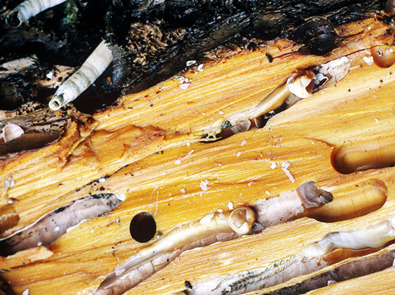
Image retrieved from: https://www.wired.com/2017/04/mystery-5-foot-long-shipworm-just-got-stinkier/
T. navalis is known to mainly feed on wood, as they produce enzymes from nitrogen fixing bacteria that help them consume the nutrients found there. With the absence of wood however, shipworms feed on planktons by filtering them using their siphons (Paalvast and van der Velde, 2013).
The Invasion
Ever seen that Spongebob Squarepants episode where Bikini Bottom was attacked by worm-like organisms eating everything in its path? The one where they called them nematodes?

GIF retrieved from https://gifer.com/en/3aqX
Well we hate to break it to you Bikini Bottom fans, those aren’t nematodes, but actually shipworms! Obviously they over-exaggerated the episode for comedic effect, but they did get one thing right, the organism is indeed INVASIVE.
It is believed that the shipworms came from the hulls of wooden ships that usually came from Europe (Carlton, 1999). These molluscs then proceeded to establish themselves and repopulate in different areas of the world, annoying ship-builders and dock workers alike for generations to come.
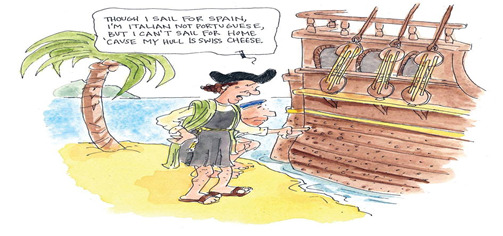
Image retrieved from: https://seahistory.org/sea-history-for-kids/ship-worm-clam/
III. Humans and Shipworms
The Shipworm or the Ship-Sinking Clam as known by many seafarers plagued docks and dikes in the early 1500s. It was in 1503 when two vessels of world renowned explorer, Christopher Columbus, sank because the common shipworm, Teredo navalis, decided to burrow in its hulls. Among other ships sunk by this pesky mollusk are: Essex (the Nantucket whaling ship that inspired the novel Moby Dick) and the Spanish Armada.
Because of their plague-like existence, early seafarers tried to counteract them with chemical concoctions that polluted waterways; dynamite in water; and even so far as deforestation in the hunt for finding repellent wood.
In other related news, Dan Distel and Reuben Shipway, specialists studying shipworms from Northeastern University believe that enzymes found in the shipworm can be utilized for biofuels from wood waste and that the antibiotic found in shipworms that help them maintain certain bacteria in their gills may offer treatment to human diseases.
IV. Interesting Facts
According to Britannica, the species under the genus Teredo are the most destructive among the shipworms.
youtube
Today, only some regions in Southeast Asia, notably in the Philippines and Thailand, harvest and consume shipworms. In these parts, shipworms are a delicacy (Willer David F., Aldridge David C. 2020).
youtube
In a news article by BBC News, it was reported that the first live specimens of the giant shipworm were found in the Philippines. The shipworms were found in Mindanao, Philippines but the exact location is kept a secret.
The jet-black color of the shipworm surprised the scientist since most bivalves are cream in color. And the shipworm was also very muscular despite being in the shell its entire life.
Kuphus polythalamia or the giant shipworm burrow in marine sediments rather than wood. Specimens have also reached 155 cm in length and 6 cm in diameter (Distel et al., 2017).
The Zachsia zenkewitschi is the sole representative of the genus Zachsia. These species bores in seagrass rhizomes. They also exhibit sexual and size dimorphism. They maintain large harems of male dwarfs within a specialized cavity of the female mantle. The species also have specialized brood pouches within the gill where they give maternal care for the larvae (Shipway et al., 2016).
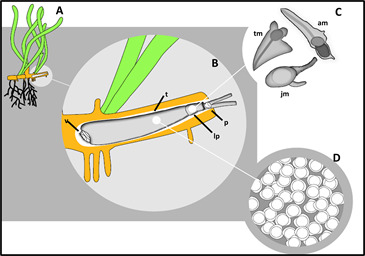
Diagram showing the life stages of the rhizome-boring bivalve Zachsia zenkewitschi.
Image retrieved from:https://journals.plos.org/plosone/article?id=10.1371/journal.pone.0155269
V. Sources
Carlton, J.T (1999). Molluscan Invasions in Marine and Estuarine Communities, Macologia. Vol. 41, no. 2, pp. 439-454.
Coe, W. (1943). Development of the primary gonads and differentiation of sexuality in Teredo navalis and other pelecypod mollusks. Biological Bulletin, vol. 84: 178-186.
Didziulis, V. (2007). "NOBANIS-invasive alien species fact sheet, Teredo navalis". NOBANIS-European network on invasive alien species. Retrieved October 17, 2020, from http://www.nobanis.org/files/factsheets/Teredo_navalis.pdf.
Distel, D. L., Altamia, M. A., Lin, Z., Shipway, J. R., Han, A., Forteza, I., . . . Haygood, M. G. (2017). Discovery of chemoautotrophic symbiosis in the giant shipwormKuphus polythalamia(Bivalvia: Teredinidae) extends wooden-steps theory. Proceedings of the National Academy of Sciences, 114(18). doi:10.1073/pnas.1620470114
Gilman, S. H. M. (2016, December 5). How a Ship-Sinking Clam Conquered the Ocean. Retrieved October 17, 2020, from https://www.smithsonianmag.com/science-nature/tunneling-clam-bedeviled-humans-sank-ships-conquered-oceans-180961288/
Lane C.E., (1959). Some aspects of the general biology of Teredo. In: Marine boring and fouling organisms, [ed. by Ray DL]. Seattle, USA: University of Washington Press. pp. 137-144.
Live, long and black giant shipworm found in Philippines. (2017, April 18). Retrieved October 18, 2020, from https://www.bbc.com/news/world-asia-39626131
Mann R., Gallager S.M., (1985). Growth, Morphometry and Biochemical Composition of the Wood Boring Molluscs Teredo navalis L., Bankia gouldi (Bartsch), and Nototeredo knoxi (Bartsch) (Bivalvia: Teredinidae). Journal of Experimental Marine Biology and Ecology, no. 85, pp. 229-251.
NIMPIS (2011). "Teredo navalis, general information". National Introduced Marine Pest Information System. Retrieved October 17, 2020 from http://adl.brs.gov.au/marinepests/index.cfm?fa=main.spDetailsDB&sp=6000016293.
Paalvast, P., van der Velde G., (2013). What is the main food source of the shipworm (Teredo navalis)? A stable isotope approach. Journal of Sea Research, vol. 80, pp. 58-60.
Paalvast, P., van der Velde G., (2011). Distribution, settlement, and growth of first-year individuals of the shipworm Teredo navalis L. (Bivalvia: Teredinidae) in the Port of Rotterdam area, the Netherlands. International Biodeterioration & Biodegradation, vol. 65, no. 3, pp. 379-388. Retrieved October 17, 2020, from https://www.sciencedirect.com/science/article/pii/S0964830511000035
doi: 10.1016/j.ibiod.2010.11.016
Willer David F., Aldridge David C. (2020) From Pest to Profit—The Potential of Shipworms for Sustainable Aquaculture. Frontiers in Sustainable Food Systems. Vol 4 p 164 https://doi.org/10.3389/fsufs.2020.575416
4 notes
·
View notes
Text
Cuttlefish --not so cuddly
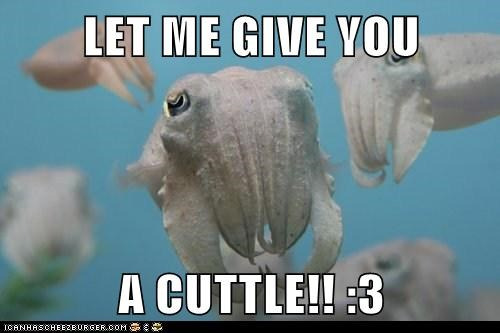
I. Classification
Animalia
Bilateria
Protosomia
Lophozoa
Mollusca
Cephalopoda
Coleoidea
Sepiida
Sepiidae
Sepia
officinalis
Integrated Taxonomic Information System, Sepia officinalis (Linnaeus, 1758)
II. Biology
Vagabond Lifestyle
The Sepia species can be found across temperate and tropical seas except off the coast of the Americas. A range of species can be found in Asia, Europe, Africa and Australia.
Each species of sepia live in either tropical or temperate waters. They are saltwater dependent so they all inhabit the ocean. They can either live in shallow or deeper waters (as low as 2,000 ft beneath the surface). Some species migrate from warm to colder temperature as the seasons change.
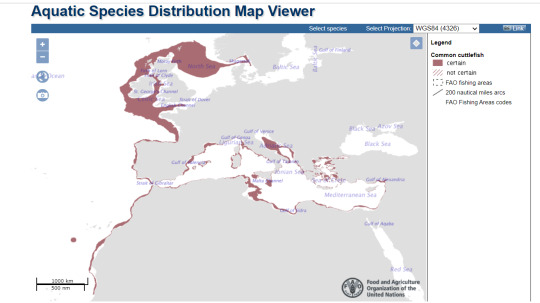
Image retrieved from fao.org
Armed and Dangerous
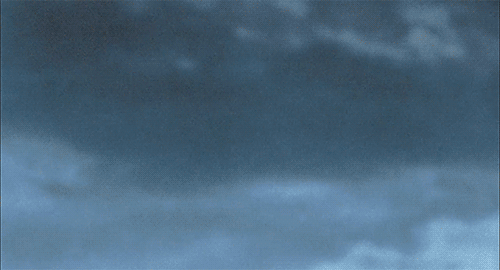
The Cuddlefish Cuttlefish has 8 arms along with 2 tentacles. These are specialized for holding on to prey like fish or shrimp. It lures prey by altering its skin color while waving its arms in a mesmerizing fashion to draw in unsuspecting prey. When the prey is near enough, its tentacles shoot forward and entangle the prey. The arms of the cuttlefish also has the ability to suck in water into its mantle cavity in order to appear larger when trying to ward off predators.

Beak
Much like a parrot’s beak, this is used to subdue prey or as a last defense towards predators. It lies deep in the base of the 8 arms of the cuttlefish. Beaks are one of the characteristics scientists use to identify species from each other.
Big Brain Energy

What makes this organism diverse may be attributed to the size of its brain. It is considered as one of the largest of any invertebrate. It can handle a variety of inputs from different senses like sight,smell and “sound” caused by pressure waves. Based on various studies, the cuttlefish can use visual cues in solving mazes. They are considered as intelligent as octopus and pigeons.
Cuttlebone
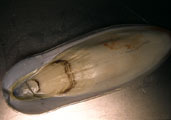
Image retrieved from: https://www.pbs.org/wgbh/nova/camo/anat-nf.html
Cuttlefish can control their buoyancy! Through their cuttlebone, a porous internal shell, they can adjust gas levels in the forward chamber and water level in the rear chamber, to control the buoyancy to rest in the water column.
Eye see you
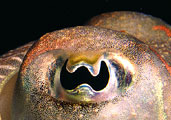
Image retrieved from: https://www.pbs.org/wgbh/nova/camo/anat-nf.html
The cuttlefish is considered to have the most highly developed eyes in the animal kingdom. It is able to see in low light and can detect polarized light. While humans only reshape lenses to see, these organisms reshape their whole eye. It has a “w” shape on the pupil which helps control light intensity entering the eye. Cuttlefish have amazing eyes that can detect differences in polarization, and can shift its lenses forwards and backwards. They can see behind them!
Fintastic form

There are specialized fins on either side of the mantle that helps the cuttlefish reposition and glide through the water. It looks like a flouncy skirt when used to maneuver. It can help the cuttlefish go forward, backward and even in circles.
Early bird catches the worm. In this sense, the fins are used by smaller males to beat other larger males gain access to females.
More to Love
The cuttlefish has 3 hearts where two pump blood to the gills and one that circulates the oxygenated blood to its body. Its blood is a blue-green color because of hemocyanin, a copper containing protein that transports oxygen in most invertebrate bodies.
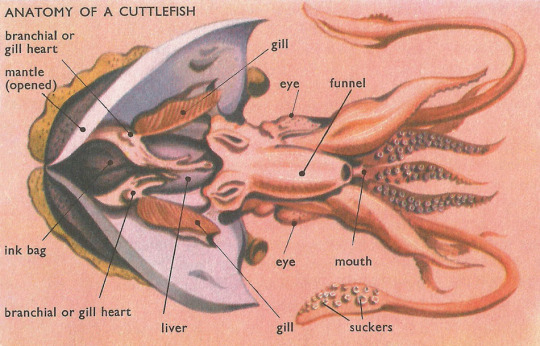
Image retrieved from: https://www.daviddarling.info/encyclopedia/C/cuttlefish.html
Secret Weapon
Since the cuttlefish is closely related to squids and octopi, it also has an ink sack that helps it ditch or distract predators who rely on sight. There are two ways to eject ink: one is to create a smoke screen behind the organism as it jets away or it can create a decoy by releasing ink in the form of pseudomorphs which are bubbles of ink surrounded by mucus that are about the same size as the cuttlefish. Dopamin and L-DOPA are present in the ink which can temporarily paralyze the sense of predators who hunt by smell.
youtube
Hairy details
There are lateral lines that consist of tiny hairs in the mantle of the cuttlefish that are sensitive to pressure waves. They are sensitive to 75 and 100 hz. These hair cells can be used as a defense mechanism by detecting movement of surrounding predators around the cuttlefish.
Mantle
Cuttlefish locomotion is heavily dependent on the mantle. When escaping predators, water is sucked into the cavity and the mantle muscles expel the liquid with great force so that the organism can move in the opposite direction. The water exits through the funnel which controls the angle of the spray. The mantle aids in respiration by bringing water up to the gills where oxygen is filtered and released into the bloodstream.
Reproductive organs
Males have a reproductive arm that inserts into the female’s buccal area, the area where the spermatophores are stored. Females accept more than one mate which leads the males to spray water through his mantle into the female’s buccal area to wash out other males’ spermatophores. Once ready to lay eggs, the female uses her arm to wipe the spermatophores onto the eggs.
Life as we know it
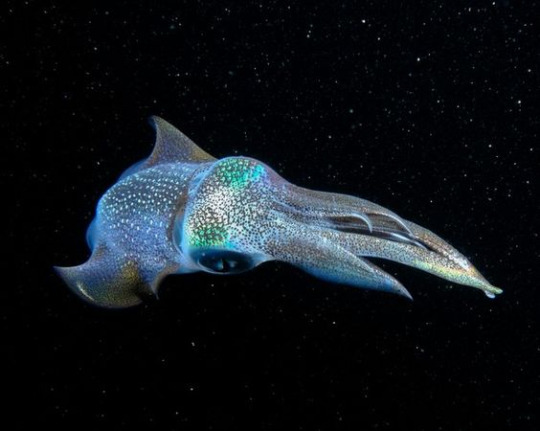
Image retrieved from: National Geographic Photo Contest 2019
In the springtime, after females lay their eggs they soon die. After two months, th eggs start to hatch. This process is highly dependent on water temperature. Once hatched, cuttlefish babies feed on small crustaceans and rapidly increase in size. Once big enough, the cuttlefish soon reach sexual maturity wherein the males mature much faster than the females. In ideal conditions the cuttlefish reach adulthood at 18-22 months. Their life span can reach 12-24 months
youtube
III. Relationship
Cuttlefish is an economically valuable marine species. Just like their cousins the squid and octopus, cuttlefish are a food source for humans. They are found in most temperate and tropical waters and the market for cuttlefish is large in Asian countries. In Japan, large cuttlefish are eaten raw as sashimi and the smaller ones are packed and frozen for cooking or sometimes dried (surume) (Nash & Thorpe, 2003).
The cuttlefish has an internal shell called the cuttlebone. This internal shell usually gets washed up to the shore and is picked up by beachgoers, collectors, and researchers. There aren’t many uses for the cuttlebone. Research on the effectiveness of cuttlebones as a supplement for caged birds are limited. However, from the research of Galal (2019), cuttlebone meal as dietary supplements for Japanese quails improves egg number and egg laying rate. There is also an increase in fertility rate and the body weight of the chicks.
Oil is also harvested from cuttlefish liver. In a journal article by Meivelu Moovendhan et al (2018), the oil from the liver of Sepia pharaonis was evaluated for its quality characteristics and biological activity. They found out that the oil contained Vitamins A and E, and nine fatty acids. Among the fatty acids present, Linoleic acid, DHA, and EPA had higher amounts.
According to Mehanna et al (2011), cuttlefish are overexploited in the Southeastern Mediterranean waters. The 45-day closed seasons are not effective, rather, they suggest that trawl selectivity should be improved. Also, the protection of spawning grounds through the establishment of MPA is necessary for improving stocks.
IV. Did you know?
Cuttlefish are also called “chameleons of the sea” because of their ability to camouflage. They can change their color through the help of specialized cells in their skin called chromatophores. Aside from color changing, they can also mimic the texture and shape of objects around them. They extend and retract their papillae in their body to change their skin’s texture.
Male cuttlefish change its color to attract femates. They can multitask, changing the color of half of their body to attract mates, while displaying aggressive coloration on the other side to ward off other males. In order to get a mate, a male cuttlefish also do “cross-dressing” and disguise himself as female. Since females only have three pairs of arms, a male even hides his fourth pair of arms and pretends like he’s carrying an egg. A real master of disguise!
Cuttlefish can hypnotize their potential prey by displaying pulsating light and color.
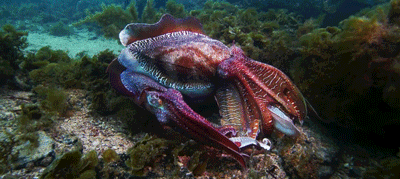
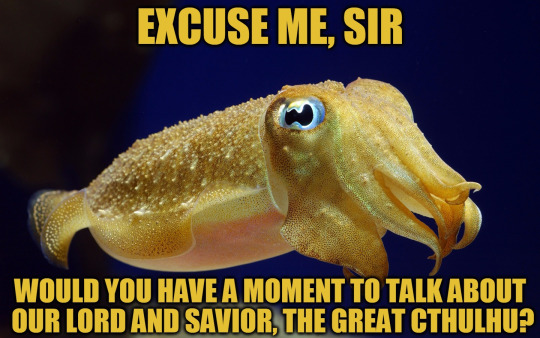
V. References
Compton, A. and L. Wiley (2011). "Sepia officinalis" (On-line), Animal Diversity Web. Retrieved October 08, 2020 from https://animaldiversity.org/accounts/Sepia_officinalis/
Geary, Daniel. (2015). Three hearts and blueish green blood… 10 fun facts about cuttlefish. Retrieved October 07, 2020 from https://atmosphereresorts.com/three-hearts-and-blueish-green-blood-10-fun-facts-about-cuttlefish/
Keyser, Hannah. (2015). 10 Colorful Facts About Cuttlefish. Retrieved October 07, 2020 from https://www.mentalfloss.com/article/66759/10-colorful-facts-about-cuttlefish
Mehanna, Sahar & Haggag, H. (2011). STOCK ASSESSMENT OF THE COMMON CUTTLEFISH, Sepia officinalis IN THE SOUTHEASTERN MEDITERRANEAN, EGYPT. Journal of Shellfish Research. 30. 1013-1013.
NOVA | Kings of Camouflage | Anatomy of a Cuttlefish (non-Flash) | PBS. (2007, March). Retrieved October 10, 2020, from https://www.pbs.org/wgbh/nova/camo/anat-nf.html
Reid, A., Jereb, P. and Roper, C.F.E (2005). “Cephalopods of the world. An annotated and illustrated catalogue of cephalopod species known to date. Volume 1. Chambered nautiluses and sepioids (Nautilidae, Sepiidae, Sepiolidae, Sepiadariidae, Idiosepiidae and Spirulidae).
Reproduction and Life Cycle. (n.d.). Retrieved October 10, 2020, from https://cuttlefishsepiida.weebly.com/reproduction-and-life-cycle.html
FAO Species Catalogue for Fishery Purposes. No. 4, Vol. 1. Rome, FAO. 2005. 262p. 9 colour plates. pp. 56 - 61.
6 notes
·
View notes